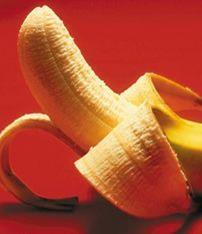
As official EU statistics show that banana imports from Ecuador fell three per cent in 2006, the Andean country has branded the EU’s regime “illegal”. It has now been granted an extraordinary meeting of the disputes settlement body of the World Trade Organisation (WTO) next Thursday.
“According to Eurostat figures, our exports have declined by three per cent, while those of ACP countries have increased by 20 per cent,” Juan Holguin, commercial counsellor at the Ecuadorian mission to the WTO in Geneva, told freshinfo. “Ecuador is the biggest exporter to the EU and yet our exports have declined. Contingencies to the ACP countries are illegal and discriminatory against Ecuador and distort the market. They were supposed to be removed by the end of 2005 by the EU, but they still exist.”
This latest action by Ecuador reignites the banana wars of 10 years ago between the US, backed by dollar banana-producing countries such as Ecuador, and the EU.
The EU still argues that its €176 a tonne tariff has brought it into line with WTO rulings. But now Ecuador is seeking a formal investigation. Spokesman for the EU’s farm directorate general Michael Mann said: “As far as we are concerned, we have done what we needed to do.
“Any idea that [Ecuador] is kept out of the European market is just not true,” he said.
EU data released this week by the European Commission showed that the EU imported 12.3 per cent more bananas in 2006 than the previous year - some 4.2 billion tonnes. The largest rise in imports was from ACP countries at 18.6 per cent with exports rising by 173 per cent and 478 per cent respectively for Jamaica and Ghana. Cameroon and Cote d’Ivoire retained their position as the EU’s two main ACP suppliers.
Overall, Latin American banana imports in the EU rose by 10.7 per cent. Guatemalan sendings rose by 811 per cent from a very low base and Peruvian and Brazilian sendings also increased.
Meanwhile, figures released in Costa Rica this week show that 2006 signified a return to form for banana growers. Volumes were down in 2005 largely due to climatic factors, but the Central American nation saw production bounce back to 107.4 million cartons, marking a 21 per cent increase on 2005.
Importantly, training and improved cultivation techniques are paying off and have significantly improved yields, making Costa Rica the most efficient producer in the world with yields of 2,524 cartons a hectare compared to 1,724 in Colombia and 1,400 in Ecuador.
“Costa Rica has had a tremendous year in 2006, the best in 10 years,” said Romano Orlich, president of Corbana. “Our revenues have grown strongly and Europe is now our largest export market, fuelled by strong gains in our core markets. Export levels to the US are also the highest in four years. In 2006 we demonstrated why we are the third-largest exporter of bananas in the world.”
However, the going has been tough at two of the biggest banana firms, with Chiquita reporting a net loss of $42m in its fourth quarter statement and a net loss of $96m for the full year. Chairman Fernando Aguirre put the performance down to competitive pressures and regulatory changes in the European market. The story was similar at Fresh Del Monte Produce, which reported a net loss of $141.5m for 2006. Chief executive Mohammad Abu-Ghazaleh cited the European banana market as a negative contributing factor.



